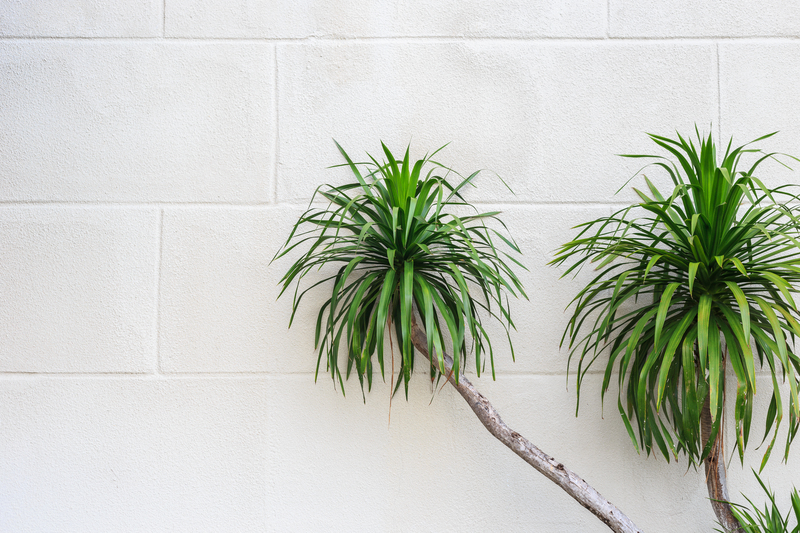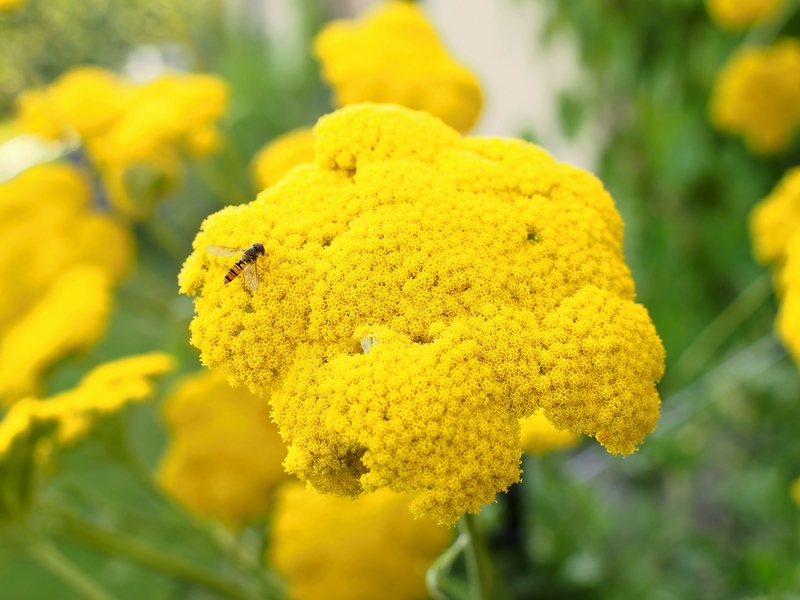Keeping Your Garden Alive During the Winter Chill: Essential Tips for Success
As the days grow shorter and temperatures dip, many gardeners worry about the fate of their beloved plants. Keeping your garden alive during the winter chill can be a challenge, but with the right knowledge and preparation, you can protect your outdoor oasis from the harshest conditions. This comprehensive guide will help you understand the unique needs of your garden during winter, spotlight key strategies to help plants survive frosty nights, and provide actionable advice on winter gardening techniques that ensure your landscape remains vibrant until spring.
Understanding the Winter Challenges for Gardens
Winter brings a host of challenges to gardens: freezing temperatures, biting winds, low light levels, and periodic snow or ice. These changes can stress your plants, damage roots, and disrupt growth cycles. To keep your garden flourishing during the coldest months, it's crucial to recognize what winter means for your specific climate and plant choices.
- Cold-hardy vs. Tender Plants: Some species, like evergreens and native perennials, are adapted to withstand freezing conditions. Tender annuals and tropical plants, however, are often at risk.
- Frost Heave: Fluctuating temperatures cause soil to expand and contract, sometimes pushing plant roots out of the ground.
- Moisture Imbalance: While some regions experience heavy winter rain, others may go weeks without moisture, leading to dry soils.
Preparing Your Garden for the First Frost
The most effective way to keep your garden alive during winter begins before the first frost arrives. Proactive preparation can save countless plants.
- Plan Your Plantings: Choose cold-hardy varieties that thrive in your region. Consult local gardening centers for advice on the best winter-hardy annuals and perennials.
- Clean Up Debris: Remove fallen leaves, spent flowers, and dead stems. These can harbor diseases and pests over winter.
- Trim Smartly: Prune dead or diseased wood from shrubs and trees. However, hold off on cutting back perennials until spring; old growth can insulate the crown.
- Feed and Fertilize: Treat your garden with a slow-release fertilizer in late fall to strengthen root systems.
Mulching: The Secret Weapon for Winter Gardens
One of the best defenses against winter cold is mulching. A generous layer of mulch acts as an insulating blanket, protecting roots from freezing and preserving soil moisture.
- Organic Mulch: Use shredded bark, straw, dried leaves, or compost. Apply a 2-4 inch layer around perennials, shrubs, and trees, extending a few inches beyond the root zone.
- Inorganic Options: For rock gardens or succulents, gravel or small stones can shield roots from rapid temperature swings.
- Timing: Mulch after the first hard frost, once the soil is cold but not yet frozen. This traps cold soil temperatures, discouraging premature spring growth that could be damaged by late frosts.
Protecting Plants from Frost and Ice
Frost damage is especially common on clear, cold nights when rapid radiational cooling occurs. To keep plants alive through a frost:
- Cover Sensitive Plants: Use old sheets, burlap, frost cloth, or even overturned buckets. Covering should be done in the evening, removed during the day to allow sunlight to reach plants.
- Watering Before a Freeze: Moist soil retains heat better than dry soil. Water garden beds thoroughly before a predicted frost for added warmth.
- Windbreaks: Erect temporary fences or use evergreen branches to shield plants from icy winds that dry out foliage and expose roots.
- Greenhouses and Cold Frames: For valuable or tender species, consider moving them into a protected structure. Even a simple DIY cold frame can extend your growing season.

Special Care for Containers and Raised Beds
Often overlooked, container plants and raised beds can be particularly vulnerable to winter's chill. The soil in pots cools faster and fluctuates more than in-ground gardens.
- Move Pots Closer to the House: Walls provide added warmth.
- Group Pots Together: This shields them from wind and helps retain heat.
- Insulate with Bubble Wrap or Burlap: Wrap containers and use mulch on the surface.
- Elevate Off the Ground: Use pot feet or bricks for better drainage and less immediate soil freezing.
Caring for Evergreens and Woody Plants in Winter
Evergreen shrubs and conifers add much-needed color and structure to winter gardens, but they are also susceptible to winter desiccation--a condition where leaves lose moisture faster than it can be replaced.
- Water Well Before Freeze: Hydrated roots are less likely to suffer damage.
- Anti-Desiccant Sprays: These products coat leaves to help retain moisture.
- Wrap with Burlap: For exposed locations, loosely wrap shrubs (particularly less hardy species) with burlap to protect from windburn and heavy snow accumulation.
Winterizing Your Lawn and Fruit Trees
The secret to a lush lawn and productive fruit trees in spring lies in winter care. Here's how to protect your edible and ornamental investments:
- Keep Lawn Cut Short: Tall grass can mat, encouraging diseases under snow.
- Rake Up Leaves: Heavy mats of leaves smother grass and block light. Compost or use them as mulch elsewhere.
- Protect Tree Trunks: Use tree guards or wrap trunks with hardware cloth to deter rodents and prevent sun scald (a condition where bark cracks due to temperature fluctuations).
- Mulch Fruit Trees: A thick ring of mulch keeps roots at an even temperature and conserves moisture.
Embrace Winter Gardening Activities
While much of your garden may appear dormant, winter is still an active season for attentive gardeners. Here are some activities that help keep your garden thriving through winter and prepare it for a vigorous comeback in spring:
- Start a Winter Vegetable Garden: Cold frames or row covers allow you to cultivate hardy greens like kale, spinach, and mache.
- Monitor for Pests and Diseases: Even in the cold, certain pests--such as voles, rabbits, and overwintering insects--can harm plants. Check regularly for damage.
- Prune Trees and Shrubs: Winter is an ideal time to prune many deciduous plants while they are dormant.
- Plan for Next Season: Browse seed catalogs, draft new layouts, and sharpen your tools.
Choosing the Right Plants for Winter Resilience
One of the best ways to ensure your garden survives winter is to select plants that can thrive during the chilly months. Consider incorporating the following:
- Native Plants: Adapted to local climates, these typically require less maintenance and are naturally resilient.
- Winter-Flowering Species: Hellebores, witch hazel, snowdrops, and camellias add color and cheer when little else blooms.
- Evergreens: These add year-round structure and serve as windbreaks for more delicate species.
- Ornamental Grasses: Their seed heads and foliage look beautiful dusted with frost and provide shelter for beneficial insects.
Common Mistakes to Avoid When Protecting Your Winter Garden
Avoiding common errors is just as important as implementing the right techniques. Here's what not to do:
- Overwatering: Soggy, frozen soil can lead to root rot. Only water when the ground is dry and thawed.
- Premature Pruning: Pruning in late fall can stimulate new growth, which is easily damaged by frost.
- Leaving Tools Outside: Tools left out over winter can rust and damage soil structure in spring.

Additional Tips for Keeping Your Garden Alive During Winter's Chill
- Monitor Microclimates: Areas near buildings, walls, or fences may stay warmer and support less hardy plants.
- Use Cloches or DIY Covers: Even recycled plastic bottles can serve as mini greenhouses for vulnerable seedlings.
- Regular Walkthroughs: Check your garden after storms for broken branches, snow load, and debris that could crush young plants.
- Feeding Birds: Birds assist with insect control and add life to the winter landscape. Keep feeders clean and well-stocked.
- Organize a Winter Compost Pile: Even though decomposition slows, kitchen scraps and yard waste can still be collected and added to your compost.
When Spring Arrives: Assess and Rejuvenate
The first warm days of spring are a rewarding time for gardeners. Assess your garden for winter damage and take quick steps to rejuvenate the space:
- Remove Winter Mulch: Once the risk of frost has passed, gently pull back mulch to allow new growth.
- Re-seed Bare Patches: Fill in areas of lawn or beds that suffered winter damage.
- Feed and Water: Resume a regular fertilizing schedule and monitor for early-season pests.
- Prune and Shape: Cut back perennials and tidy up shrubs for a fresh start.
Conclusion: Thriving Through the Winter Chill
Keeping your garden alive during the winter chill may seem daunting, but by understanding your garden's specific needs and taking a proactive approach, you ensure that your beloved plants not only survive but often thrive through the coldest months. Use these expert tips--preparing in the fall, mulching effectively, protecting vulnerable plants, and choosing winter-hardy species--to give your garden the best chance at resilience. When spring finally arrives, you'll enjoy a flourishing landscape and the peace of mind that comes with knowing your green space weathered the season with success!
Take the time to care for your garden in winter, and it will reward you with resilience, beauty, and growth come springtime. Whether you grow vegetables, ornamentals, or fruit trees, these proven strategies for keeping your garden alive during the winter will keep your outdoor space beautiful all year long.